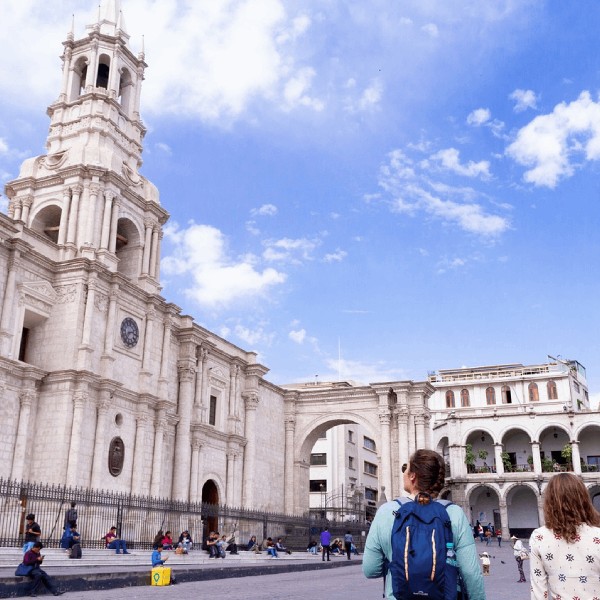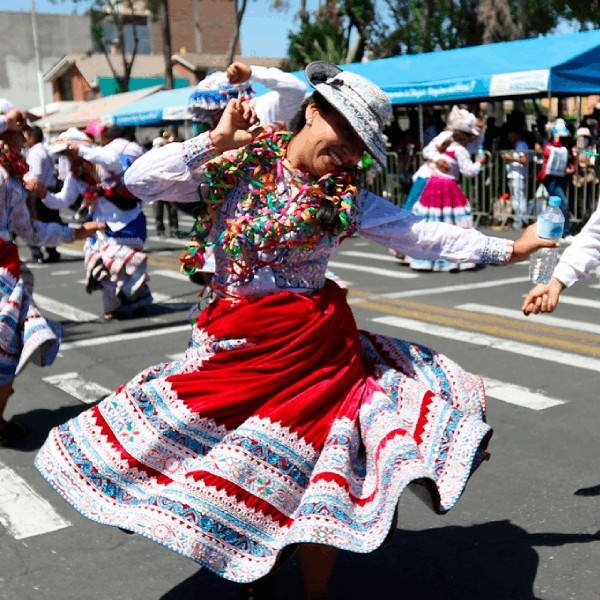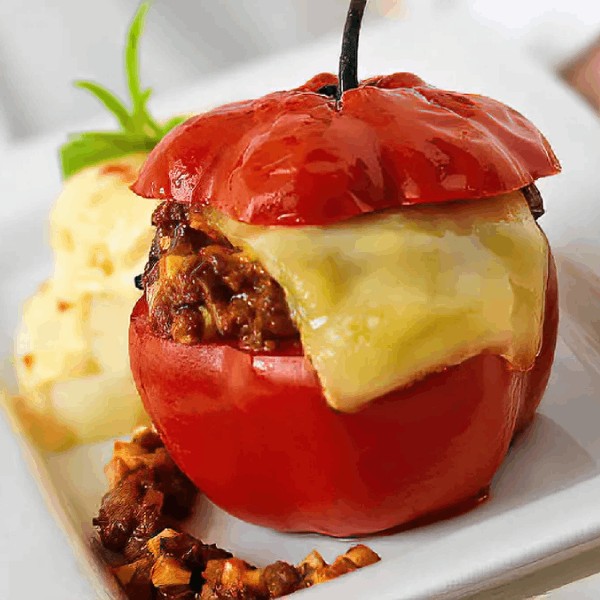
Location:
Arequipa is situated in the southwest of Peru, facing the Pacific Ocean, with 528 km of coastline. Due to its location, it serves as the commercial center of southern Peru, as well as a tourist corridor in the south of Peru.
Altitude:
The city of Arequipa is located at an altitude of 2328 meters above sea level.
Climate:
Arequipa’s climate is predominantly dry during winter, autumn, and spring due to atmospheric humidity. Arequipa justifies its nickname “City of the Eternal Blue Sky” due to temperatures that don’t exceed 25°C and rarely drop below 10°C. The wet season occurs between December and March and is characterized by afternoon clouds and sparse nighttime precipitation. Winter, from June to July, has a colder climate, with temperatures dropping to 10°C, but the dry climate helps to mitigate the intensity of the cold.
Best time to visit:
The best time to visit Arequipa is in August, during the first half of the month. This is when the city celebrates its foundation with numerous fairs, bullfights, fireworks, tourist activities, and recreational events. It’s important to note that from January to March, there’s moderate rainfall, and during the rest of the year, as mentioned before, the climate remains stable with minimal changes between the seasons.
The traditional ways to reach Arequipa are by air and by bus:
By Air:
The city of Arequipa has the Teniente FAP Alfredo Rodríguez Ballón Airport, recently renovated with comfortable facilities and good services. It operates daily flights from Lima, Cusco, and Puno (Juliaca).
By Land:
The city of Arequipa is connected to the cities of southern Peru by the Pan-American Highway, accessed from Tacna and Chile. There are regular daily bus services to and from Arequipa, Cusco, Puno, Tacna, Nazca, and others.
Arequipa – Cuzco Road: Via Juliaca, 625 km
Arequipa – Puno Road: Arequipa-Juliaca 281 km, at some points, this road reaches 4000 meters above sea level. The Juliaca-Puno route 44 km. From Puno to Desaguadero, Bolívia.
Arequipa – Matarani Road: 115 km.
Arequipa is a city of great cultural and geographical richness, and it’s a must-visit for those traveling to this destination. Here are its main tourist attractions:
Monastery of Santa Catalina: Built to house the daughters of the city’s wealthiest families, the monastery was inaugurated on October 2, 1580, as a center of absolute seclusion. It covers an area of 20,000 m² and was renovated to become an art gallery exhibiting paintings from the Cusco, Arequipa, and Quito schools. It features other areas for visitors, such as the Cloister of the Portería, the Pre-Columbian Museum, the Cloister of San Francisco, the Amazon Museum, etc.
Misti Volcano: Misti, with its 5825 meters, has always been the symbol of Arequipa. From its summit, you can see the city of Arequipa, the Chili River valley, and the Chachani and PichuPichu volcanoes.
Chivay and the Colca Valley: The capital of the province where the Calera thermal baths are located. Its beautiful landscapes and villages surrounded by diverse terraces are inhabited by the descendants of the Collagua and Cabana people. The first town you reach is Chivay, with a variety of tourist services like Cabanaconde and Cruz del Cóndor, a viewpoint from which you can admire the majestic flight of the condor and the depth of the Colca Canyon, where you can go rafting in rafts, canoes, and kayaks.
Archaeological remains of the Waca or Puerto Inca Gorge: An archaeological complex that stands out for its extensive occupation, with remains dating from the pre-ceramic period to the 14th and 15th centuries, indicating Inca presence. Some archaeologists and historians believe that one of the most important Inca routes started from this place as it entered the Ayacucho territory, reaching Cusco.
 Here are some important festivals in the city of Arequipa:
Here are some important festivals in the city of Arequipa:
January 6: Anniversary of the creation of Mollendo.
February 2: Festival of the Virgin of Candelaria in Chivay.
March/April (movable date): Carnival in Arequipa.
March/April (movable date): Holy Week in Arequipa. A traditional festival with great popular fervor in Peru. For countless years, numerous processions have taken place to remember the passion and death of Jesus Christ.
April 22: Anniversary of the Foundation of the District of Sabandía. Commemorated with cultural, agricultural, and livestock activities. Gastronomic events in typical restaurants. Visits to various tourist circuits.
May 1-3: Traditional pilgrimage to the sanctuary of the Virgin of Chapi, located 45 km from Arequipa. Many devotees make promises to visit the sanctuary for three consecutive years.
July 28-29: National holiday commemorating Peru’s independence; celebrated throughout the country. Civic-military activities take place across the territory. Regional and local fairs are very popular.
August 15:Anniversary of the creation of Arequipa. Civic-religious and cultural activities, parades, fireworks, shows, sports, etc.
August 15: Festival of the Virgin Assumption in the localities of Chivay, Andagua, and Machaguay.
August 30: Feast in honor of Santa Rosa.
November 1-2 All Saints’ Day and Day of the Dead. People visit their family members’ graves at cemeteries, bringing flowers and celebrating with music, food, and drink.
December 8-9: Feast of the Immaculate Conception in Chivay and Cayma.

Arequipa is known for its quality and variety of flavors, its incredible preparation, and its spiciness accentuated by its seasonings. The gastronomic tradition is characterized by serving a dish of the day, a custom based on the different towns in Arequipa.
Ocopa: Arequipa’s ocopa is the most famous dish from the region, both within and outside of Peru. It is made from huacatay leaves, ají mirasol pepper, yellow corn pepper, crackers or bread with evaporated milk and seasonings. It is served with boiled potatoes, a hard-boiled egg, and an olive. Its preparation is very similar to papa a la huancaína, and it is often accompanied by chicha morada (a refreshing drink made from purple corn).
Rocoto Relleno: One of Peru’s main dishes, originally from Arequipa. It is prepared with stuffed peppers, minced meat, and onion. In most restaurants, it is served with roasted potatoes.
Cauchi or Cauche de Queso: Cauchi is a typical Arequipa dish. It contains cottage cheese, yellow chili pepper, ají panca paste. In some Arequipa recipes, they add tomato, and it’s almost always accompanied by sliced roasted potatoes.
Chaque de Callos: One of Arequipa’s most traditional dishes, often eaten on Mondays. It consists of a soup made with tripe, lamb meat, potatoes, sweet potatoes, carrots, colorful ají peppers, fava beans, spearmint, tomato, cabbage, oregano, and spices. There are regional variations.
Arequipa Adobo: Arequipa’s adobo is prepared in clay pots to maintain its robust flavor. It is a dish made with lamb, rocoto pepper, jora chicha (fermented corn drink), onion, and garlic. The preparation is simple, and it’s served with potatoes.


 Here are some important festivals in the city of Arequipa:
Here are some important festivals in the city of Arequipa: Arequipa is known for its quality and variety of flavors, its incredible preparation, and its spiciness accentuated by its seasonings. The gastronomic tradition is characterized by serving a dish of the day, a custom based on the different towns in Arequipa.
Arequipa is known for its quality and variety of flavors, its incredible preparation, and its spiciness accentuated by its seasonings. The gastronomic tradition is characterized by serving a dish of the day, a custom based on the different towns in Arequipa.